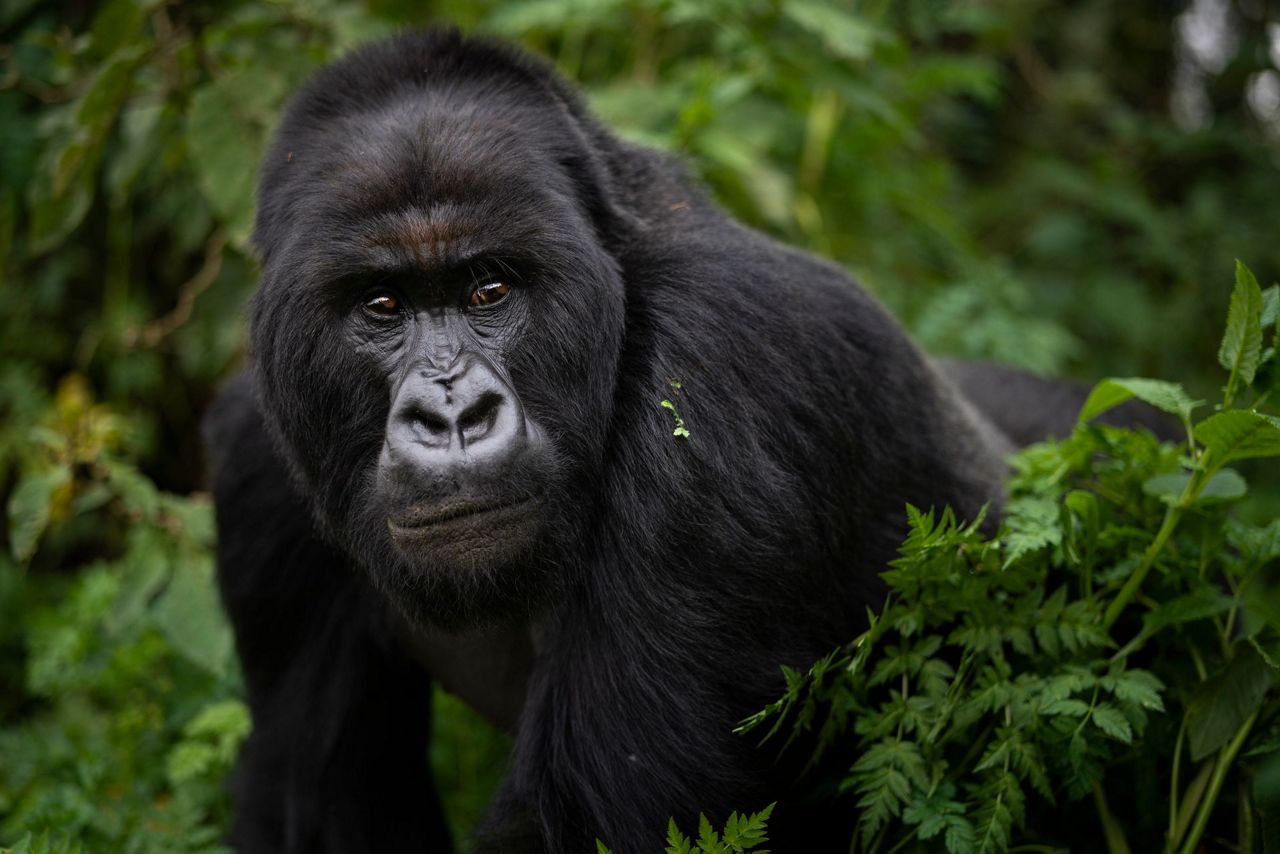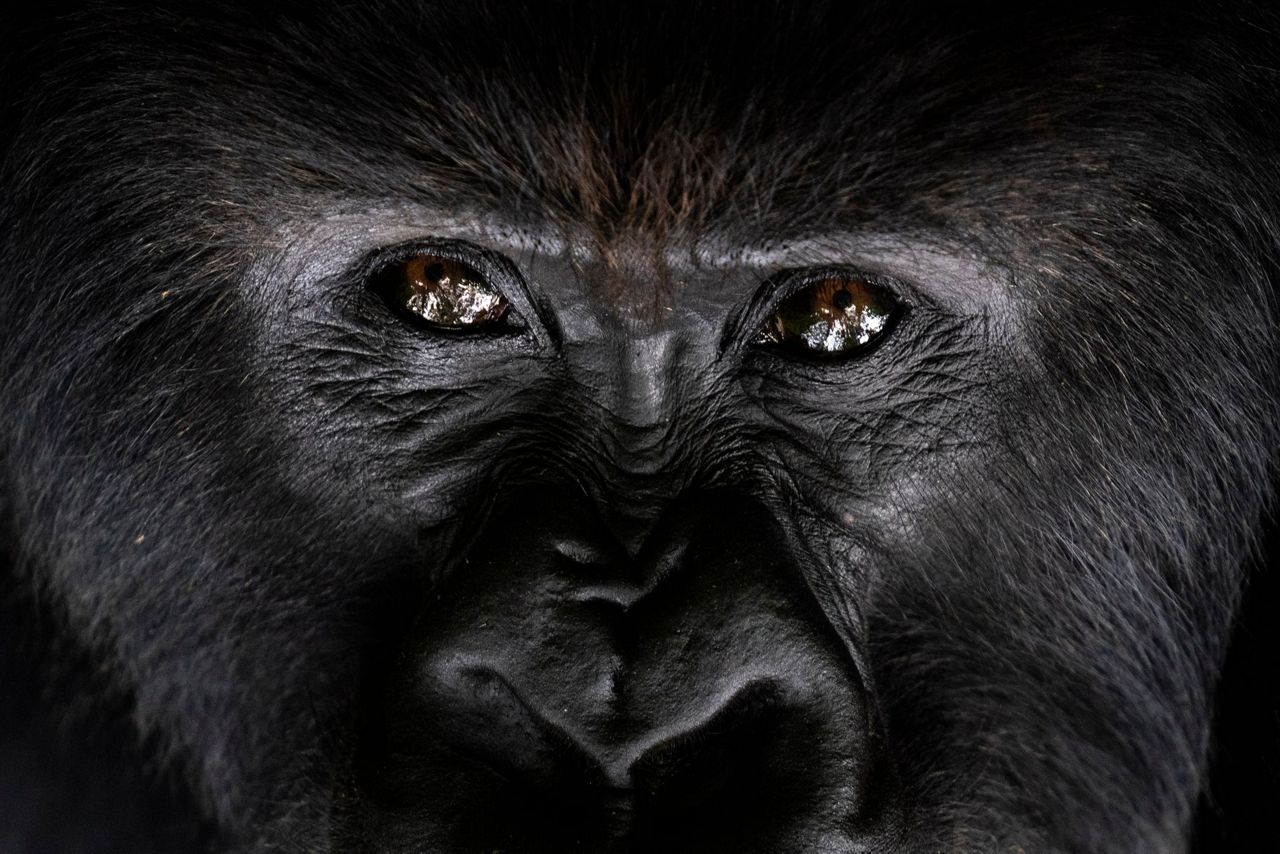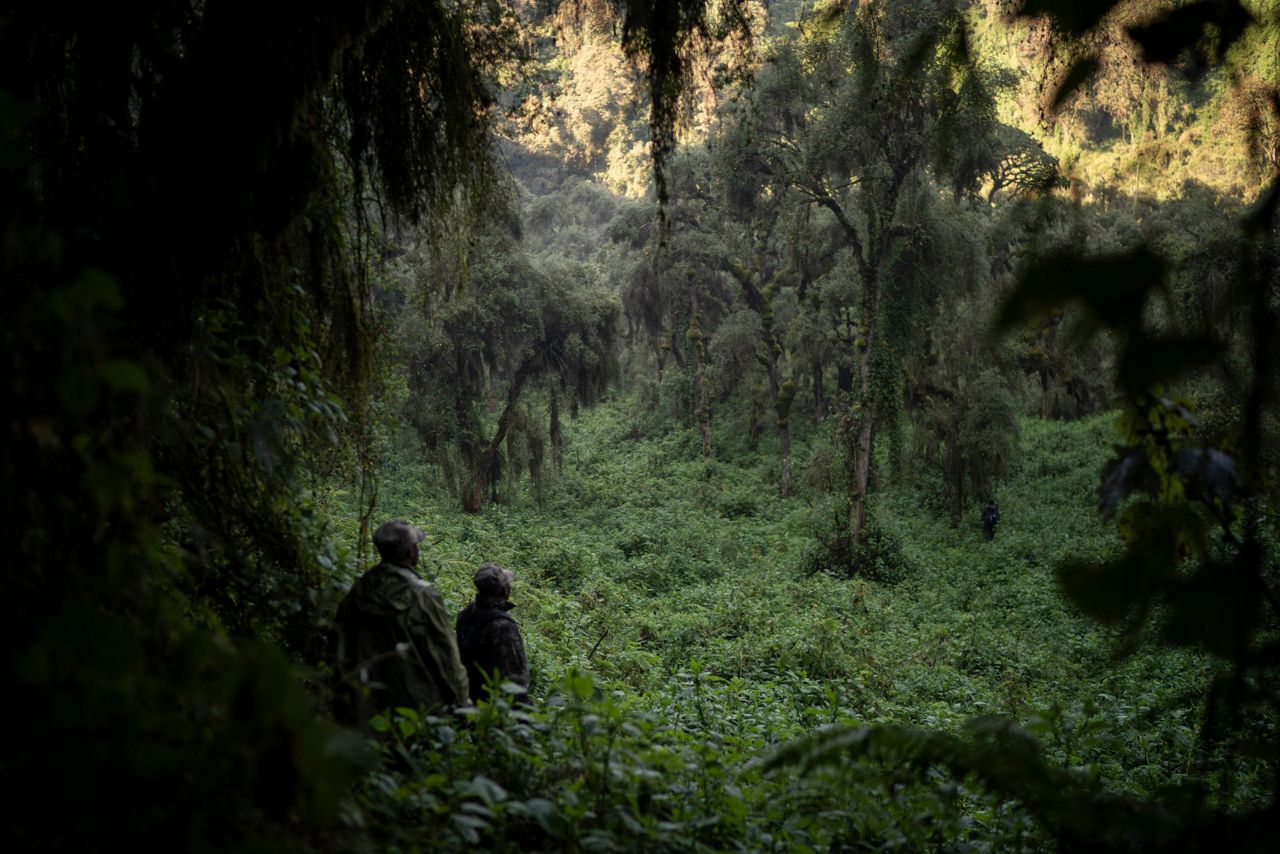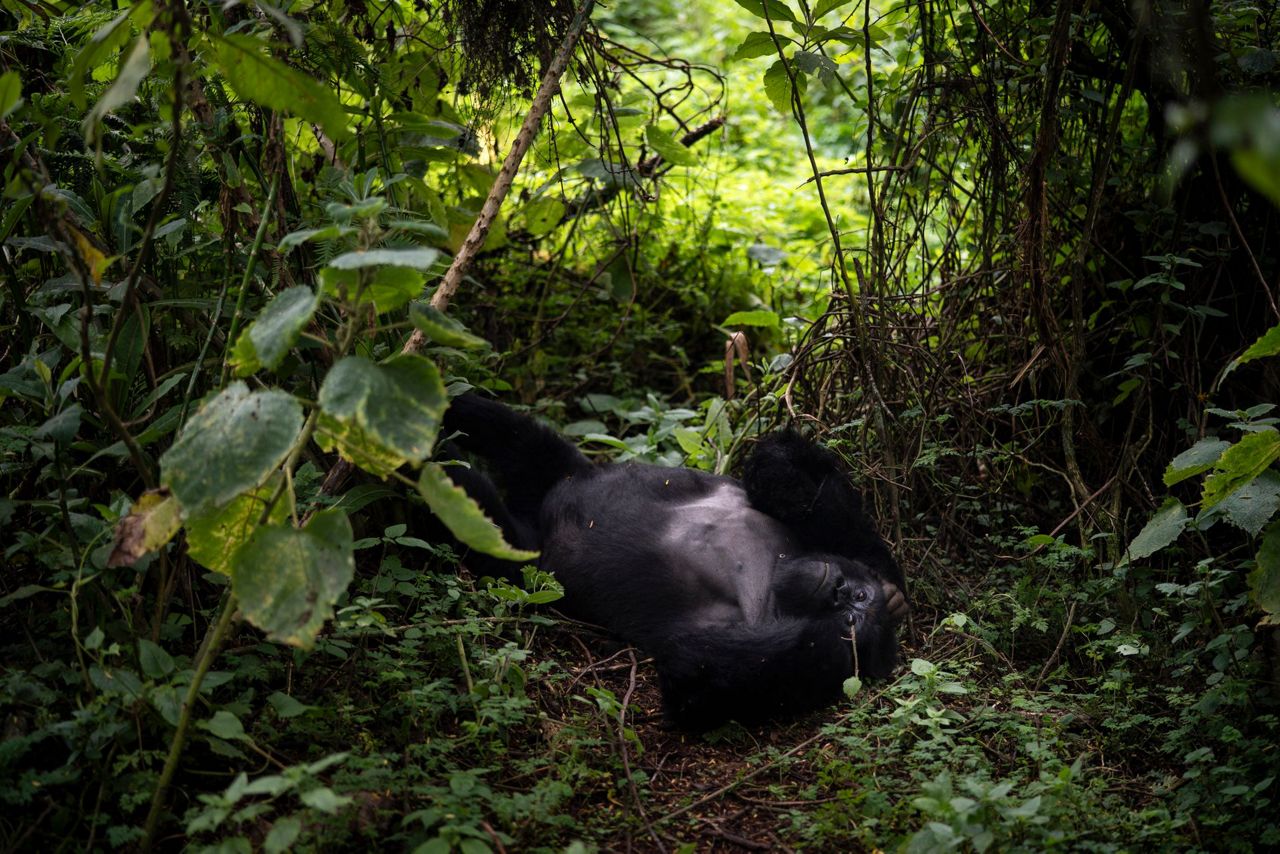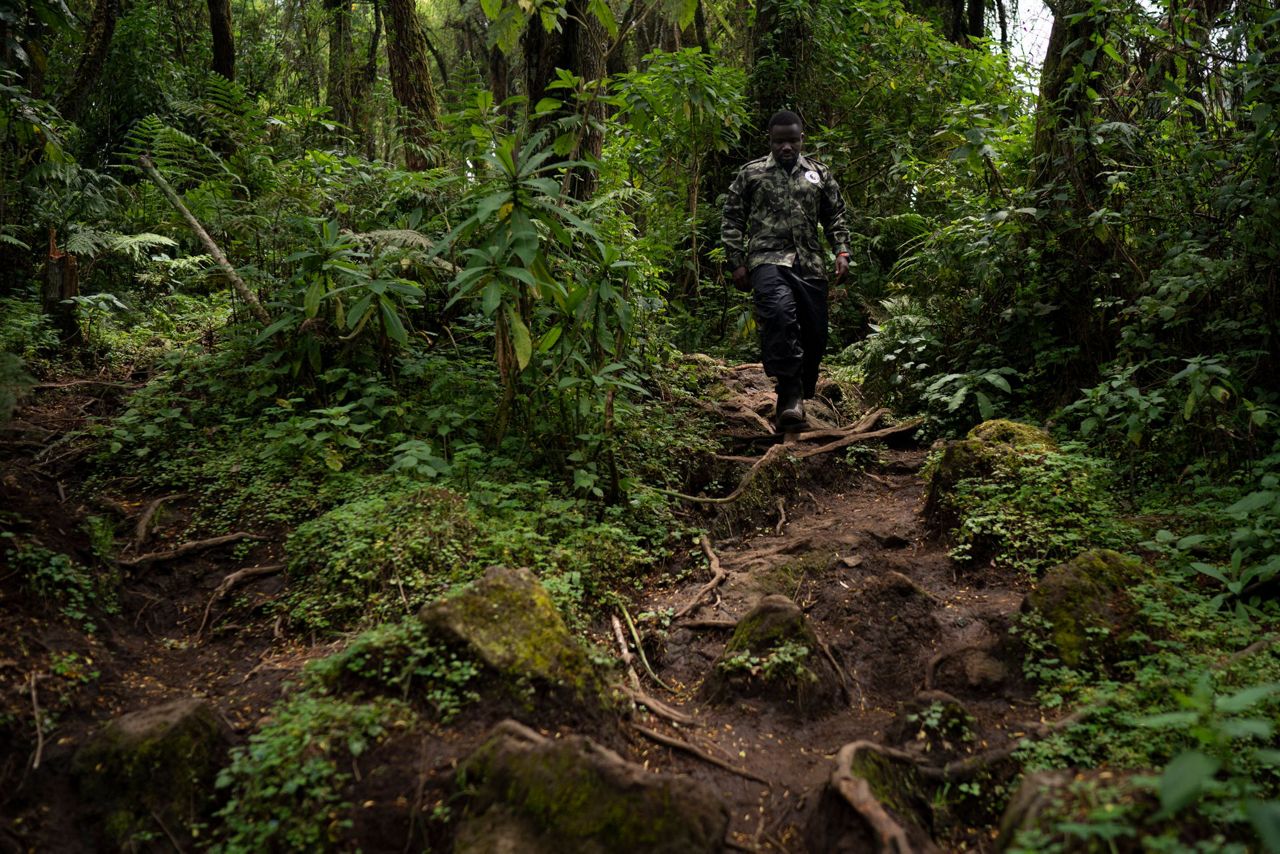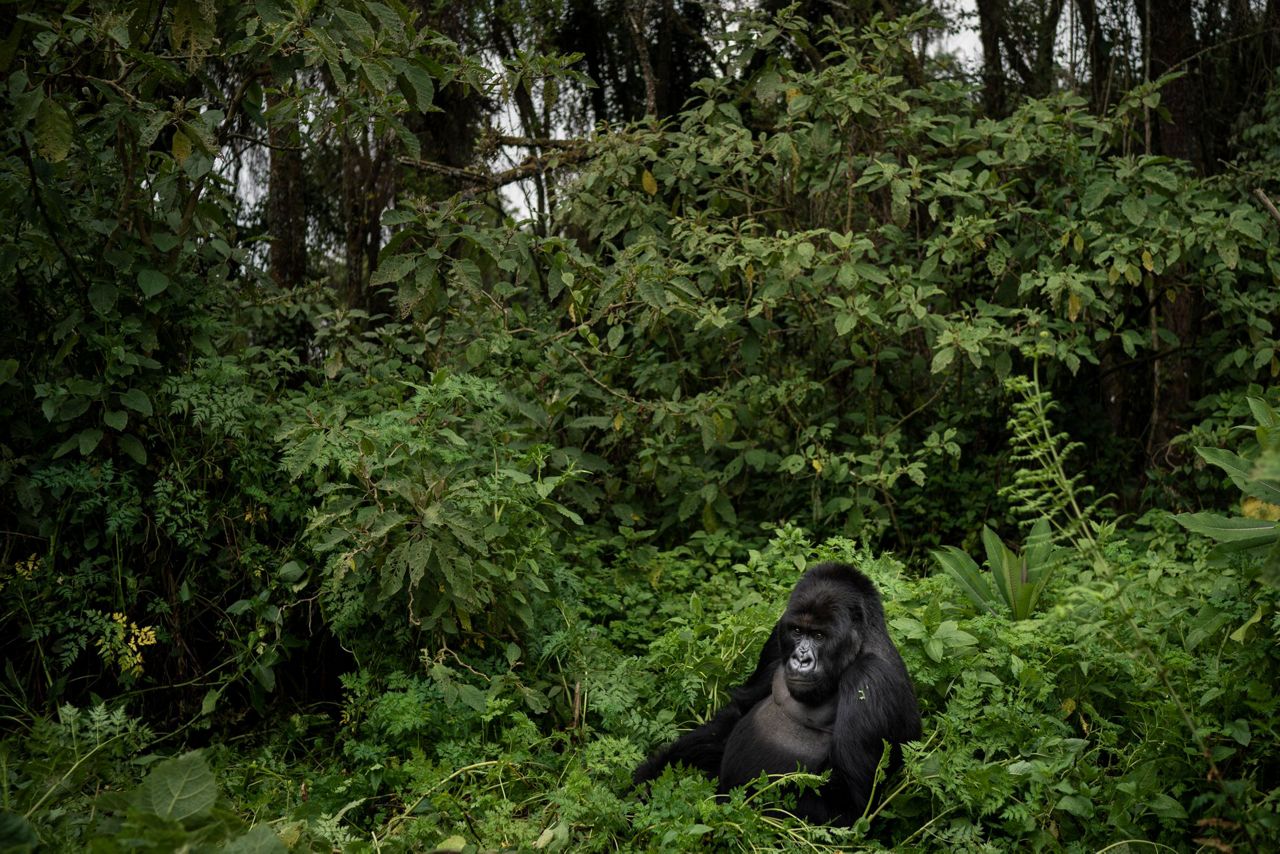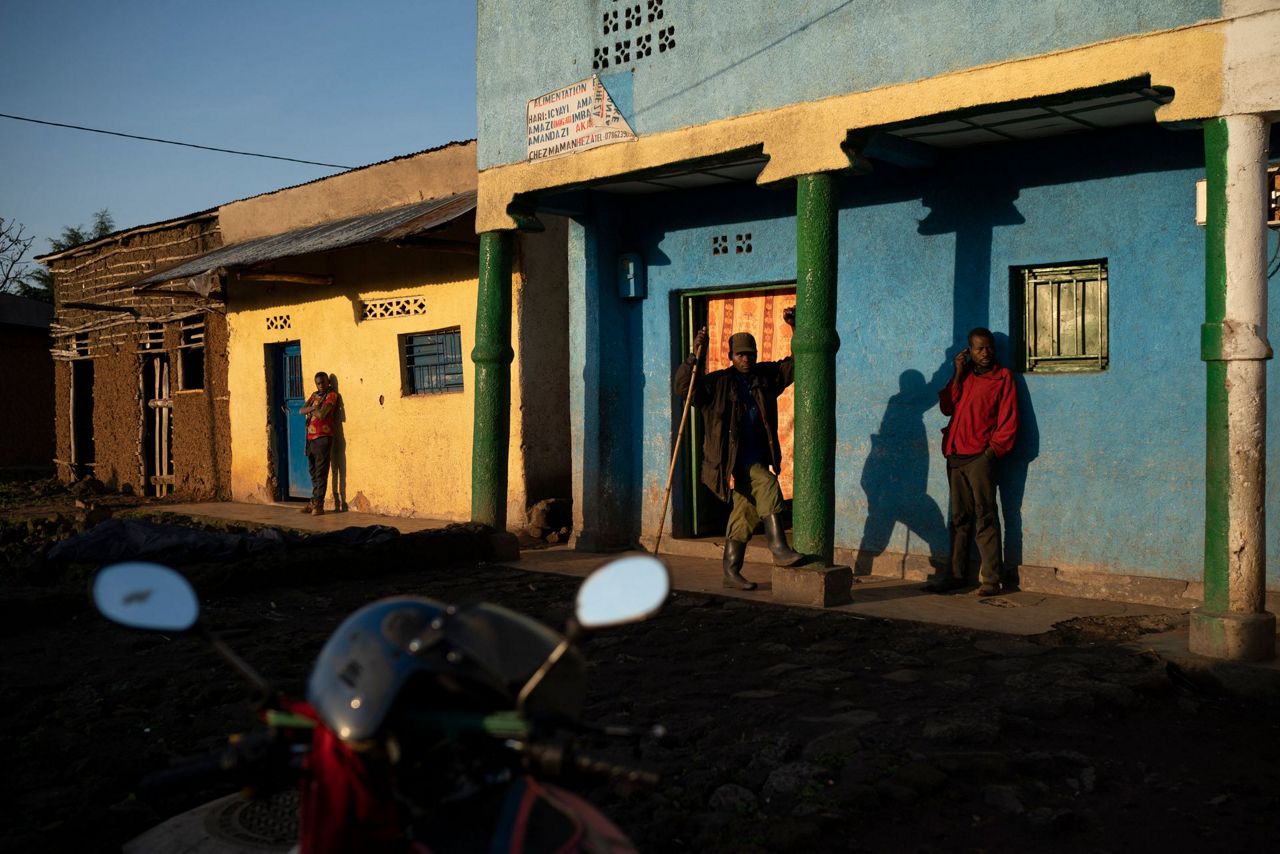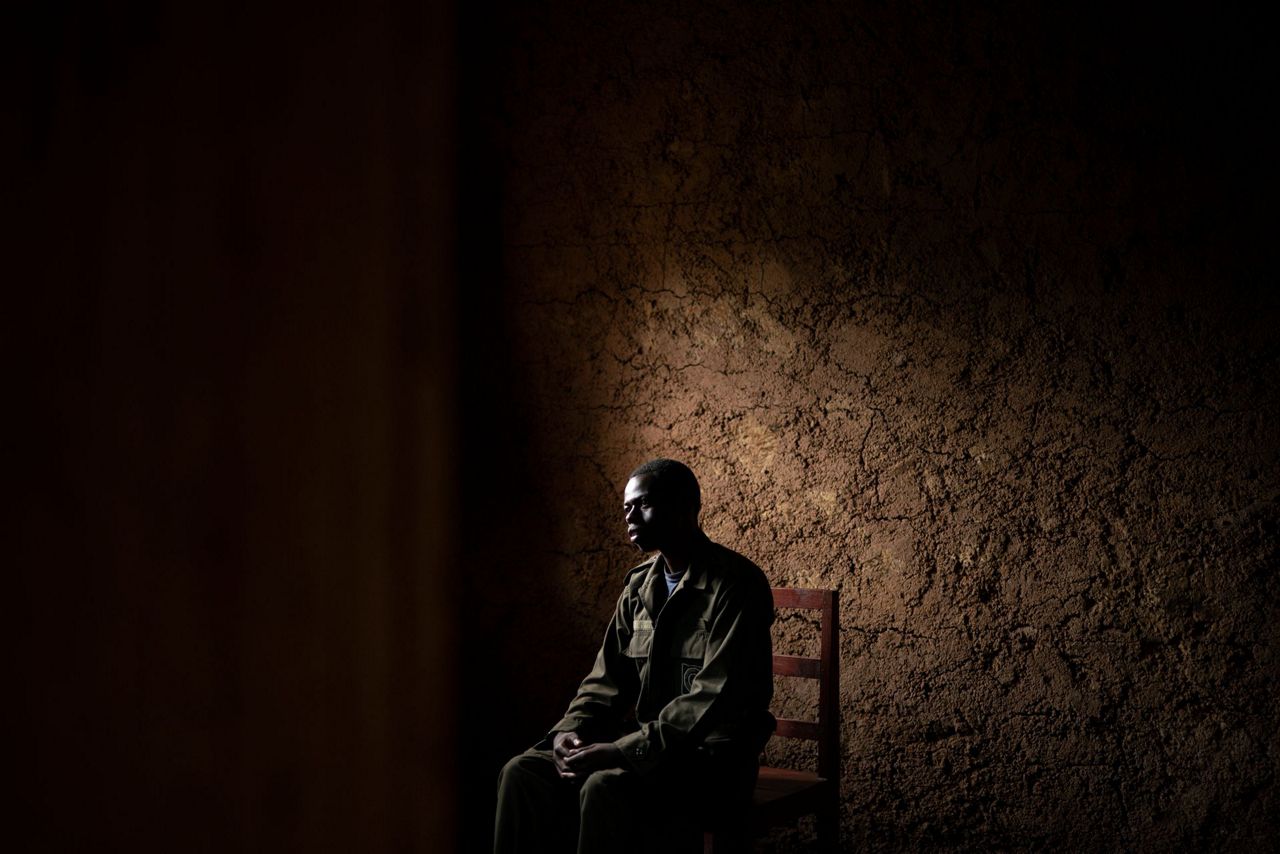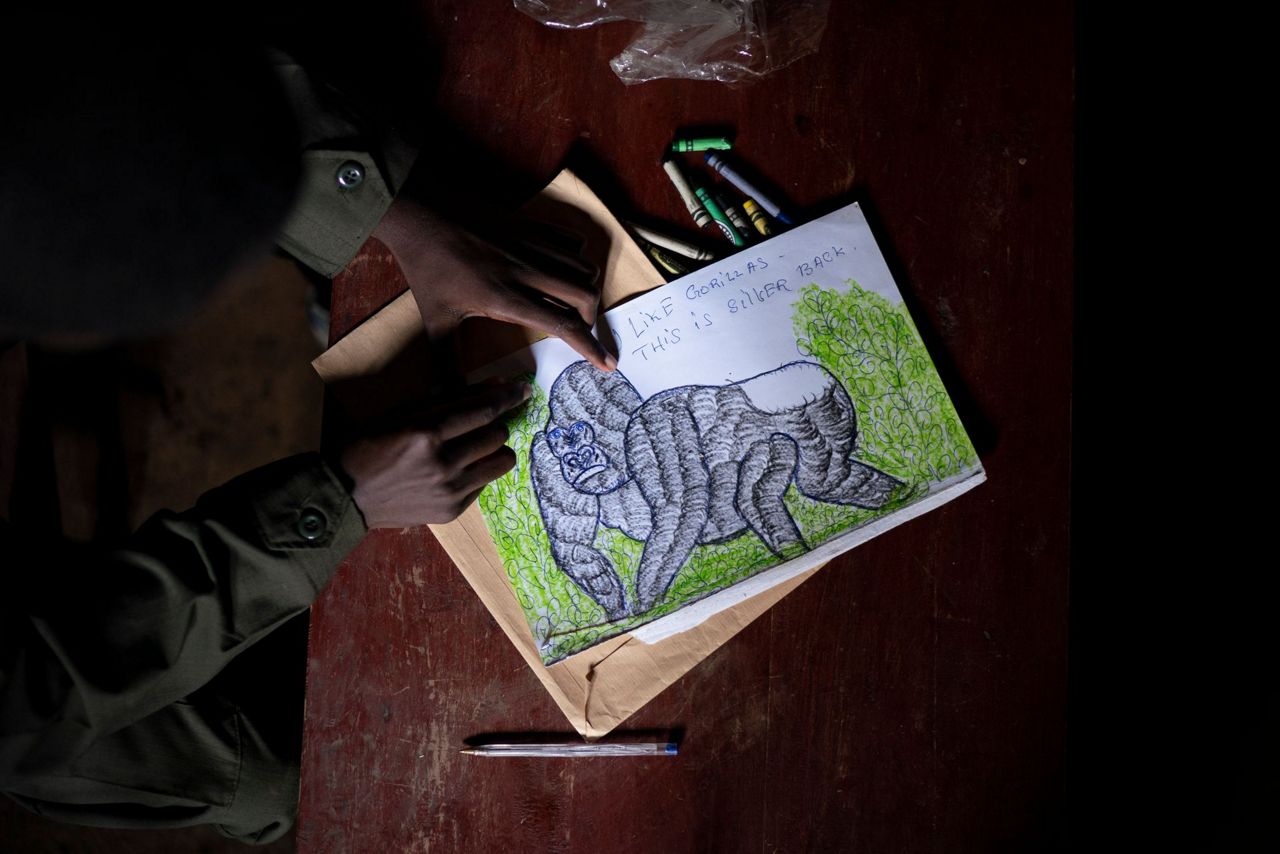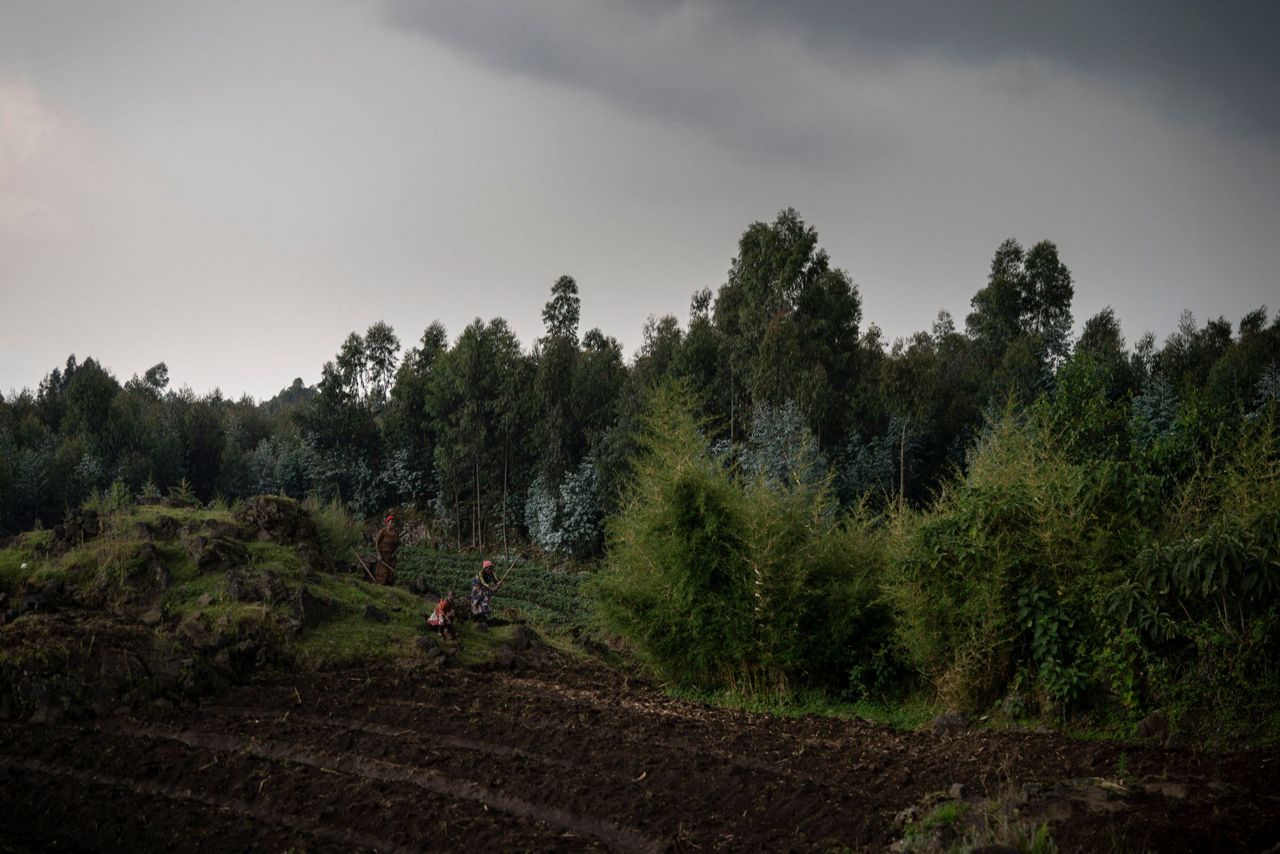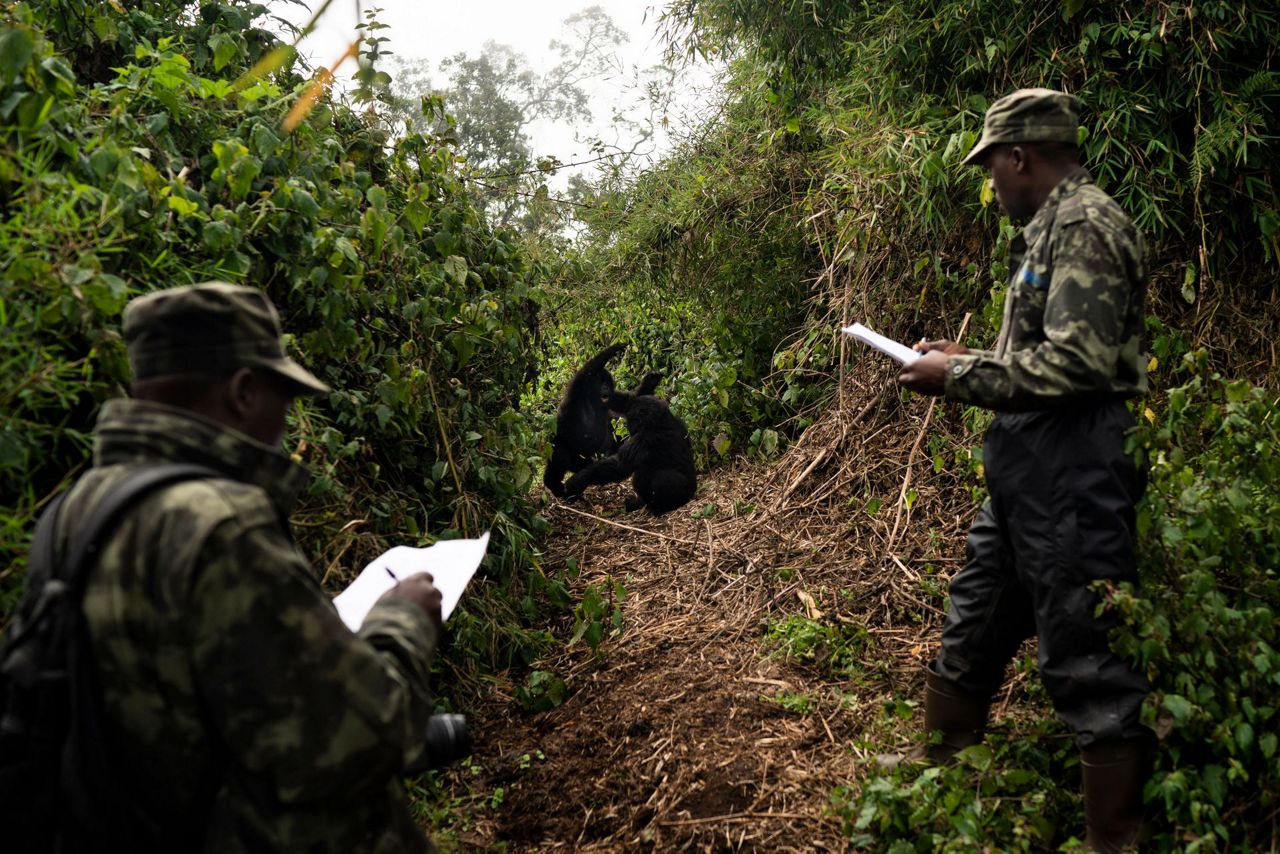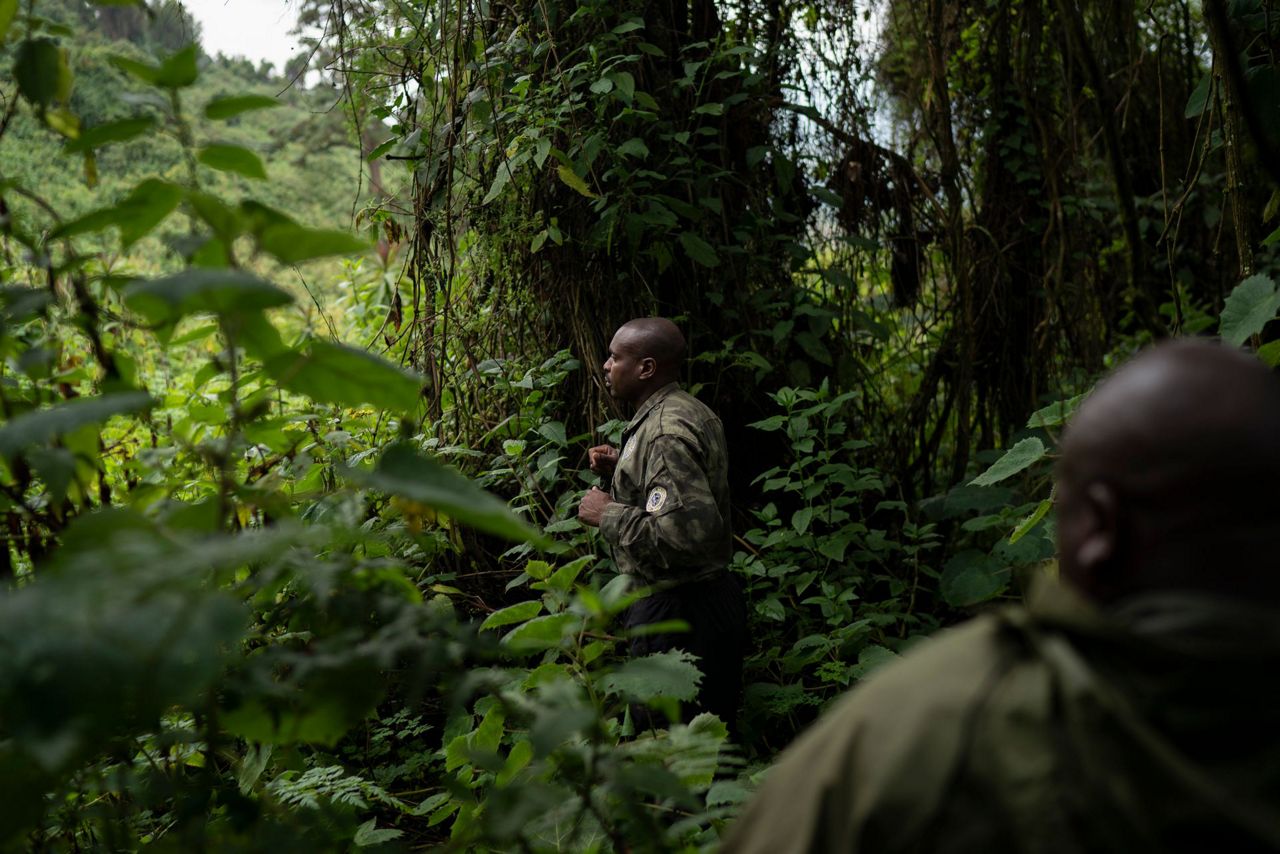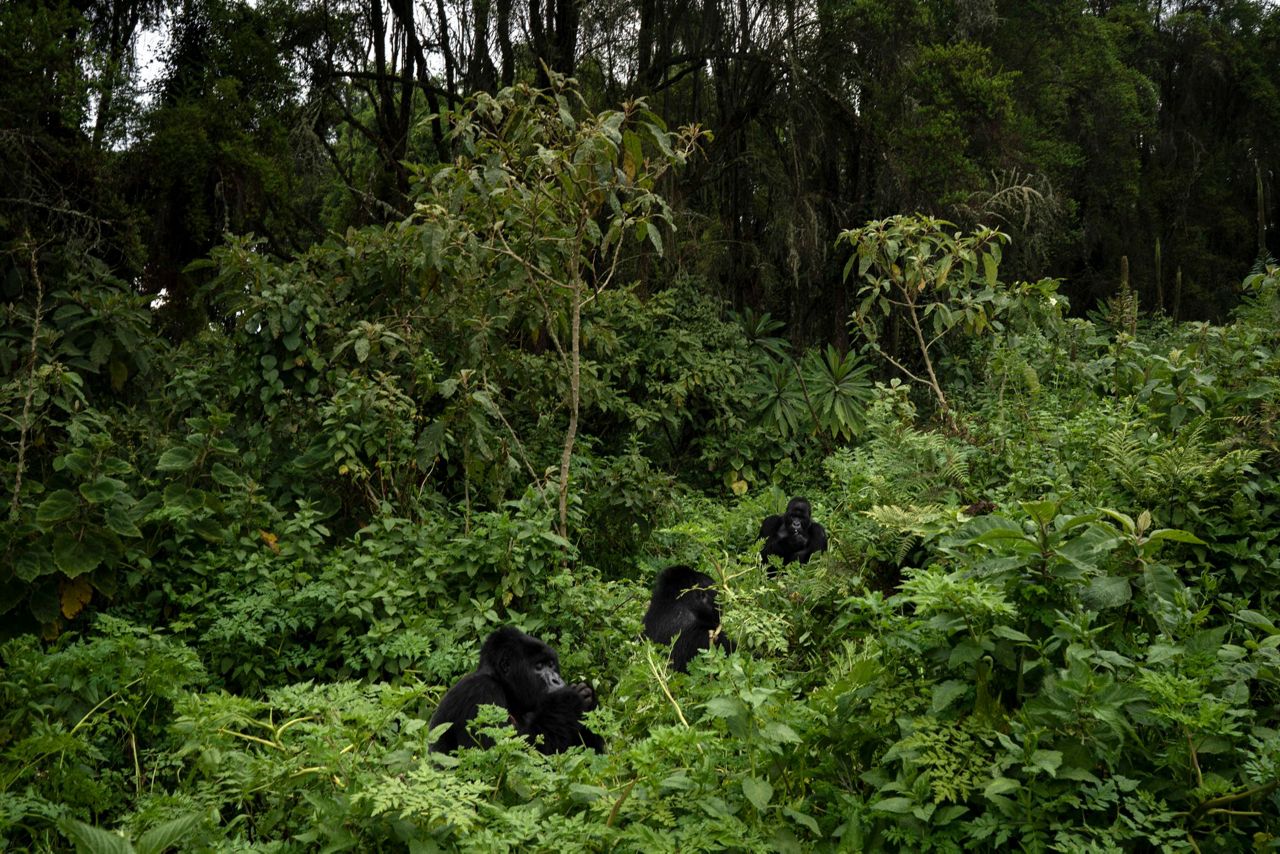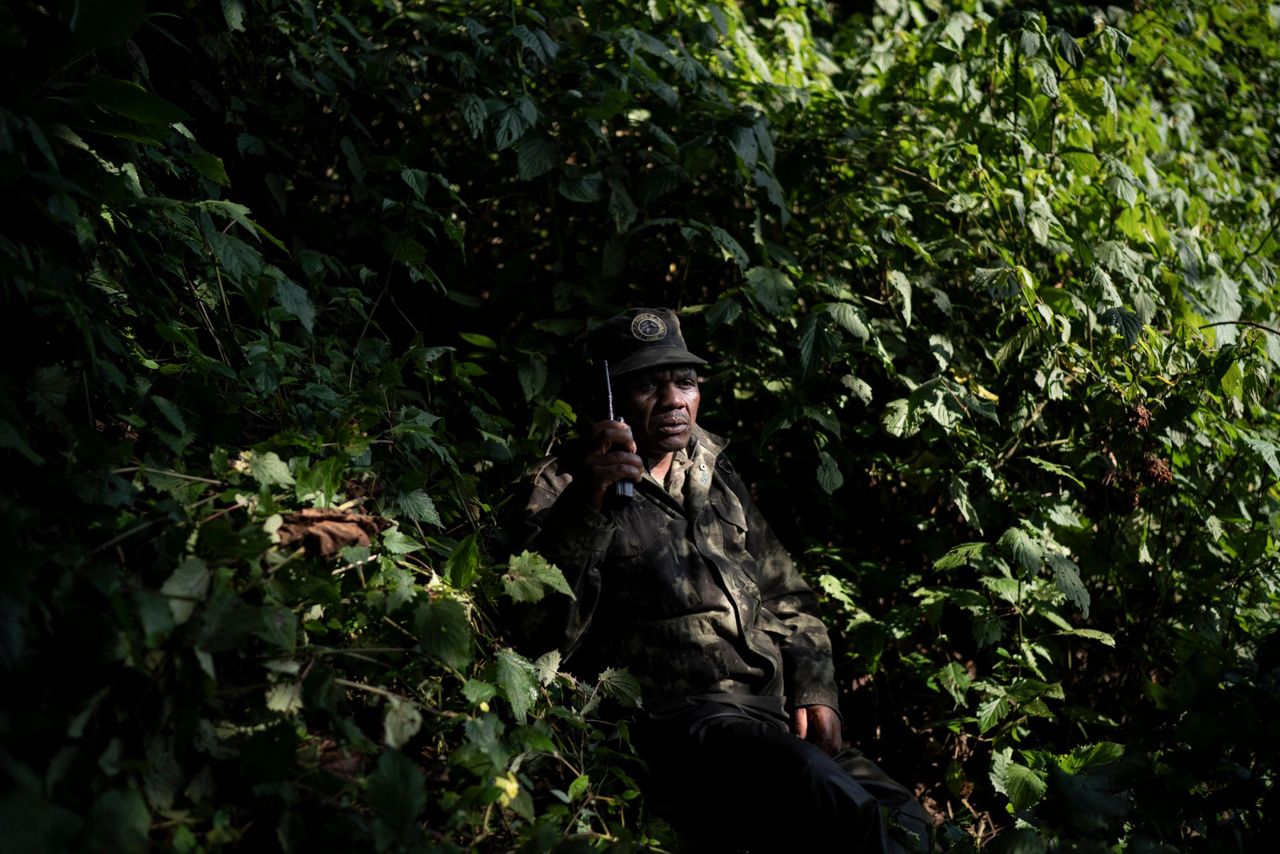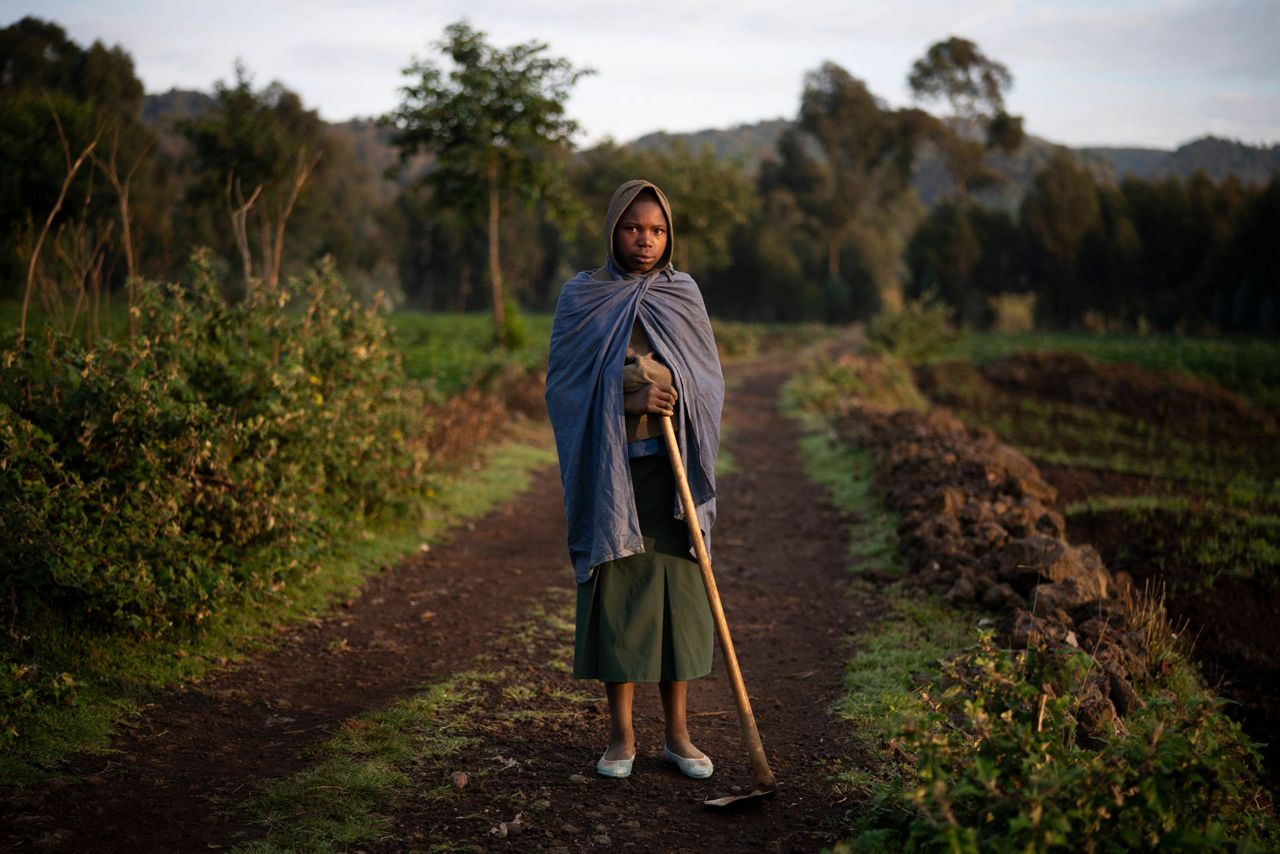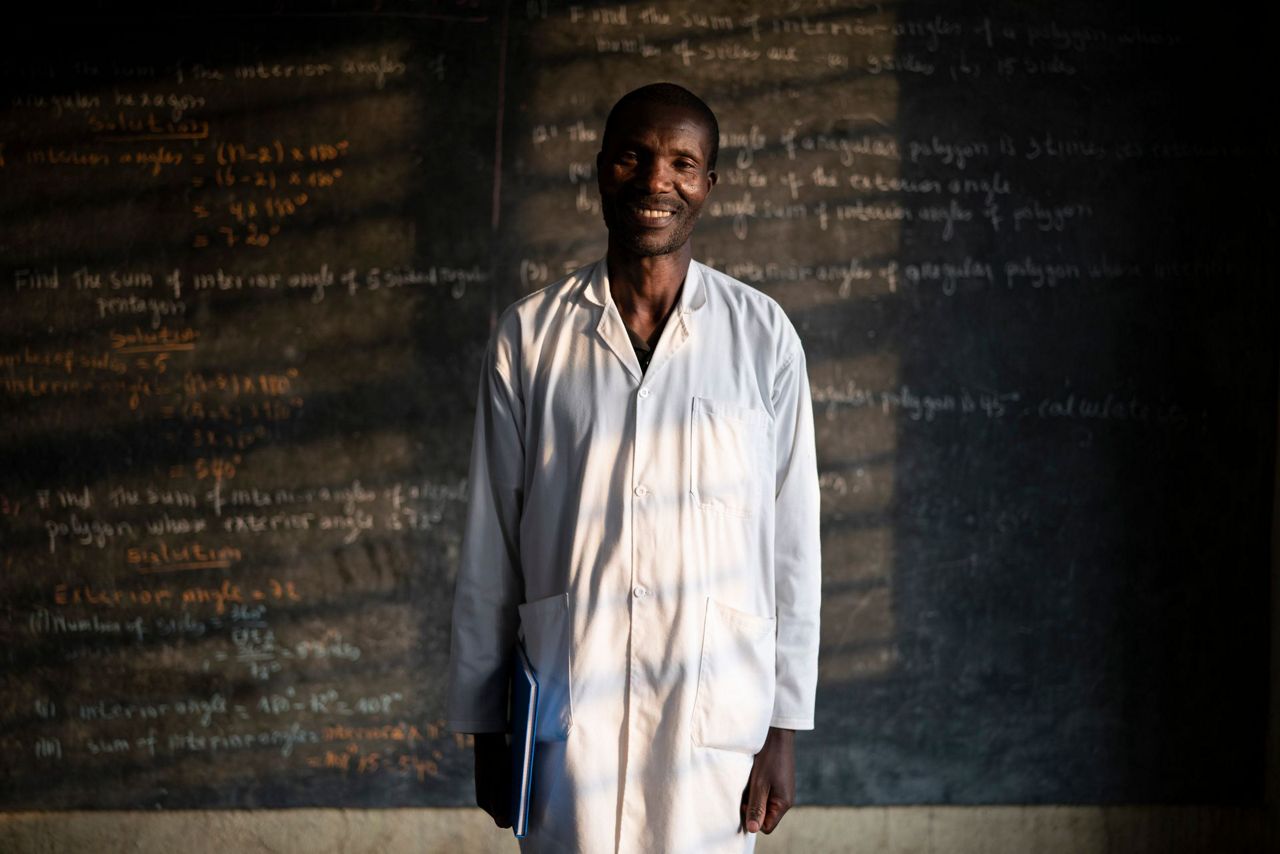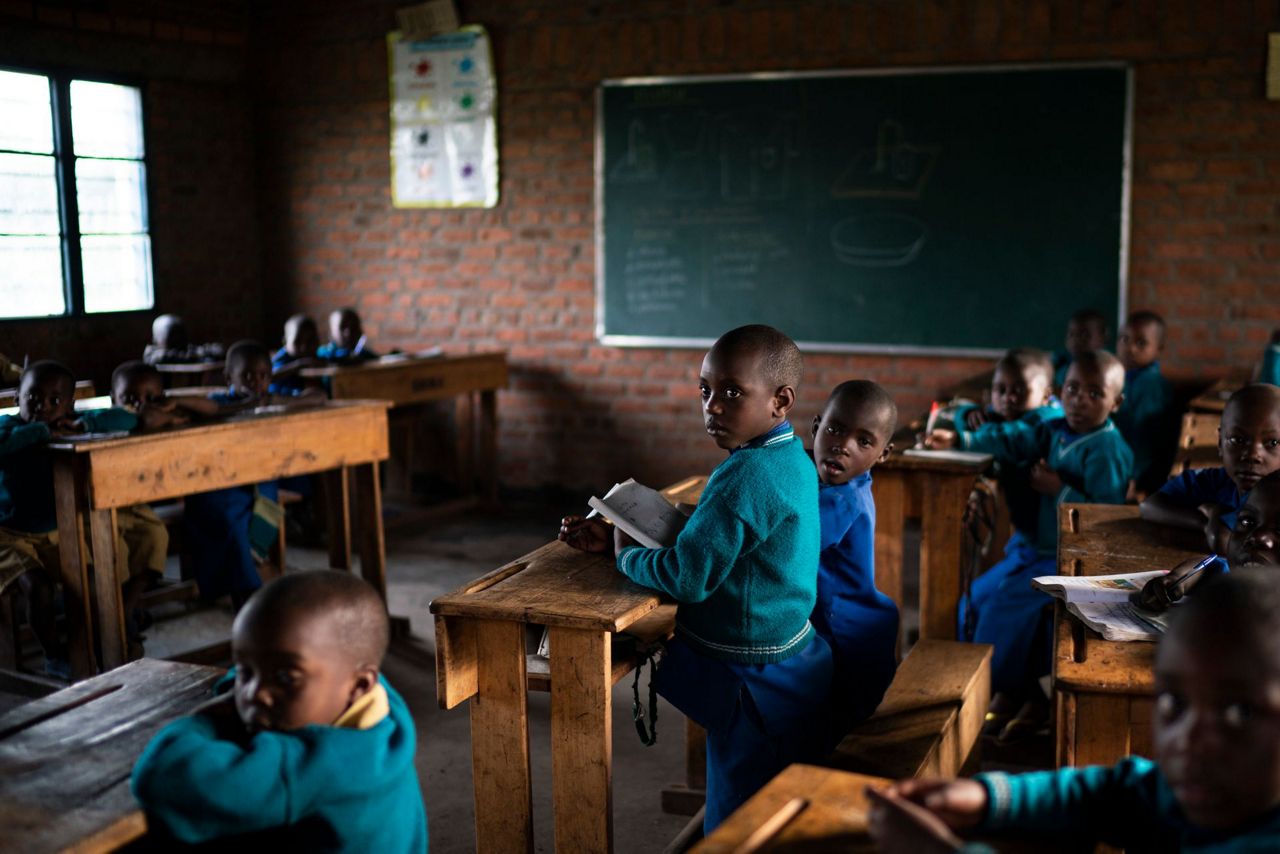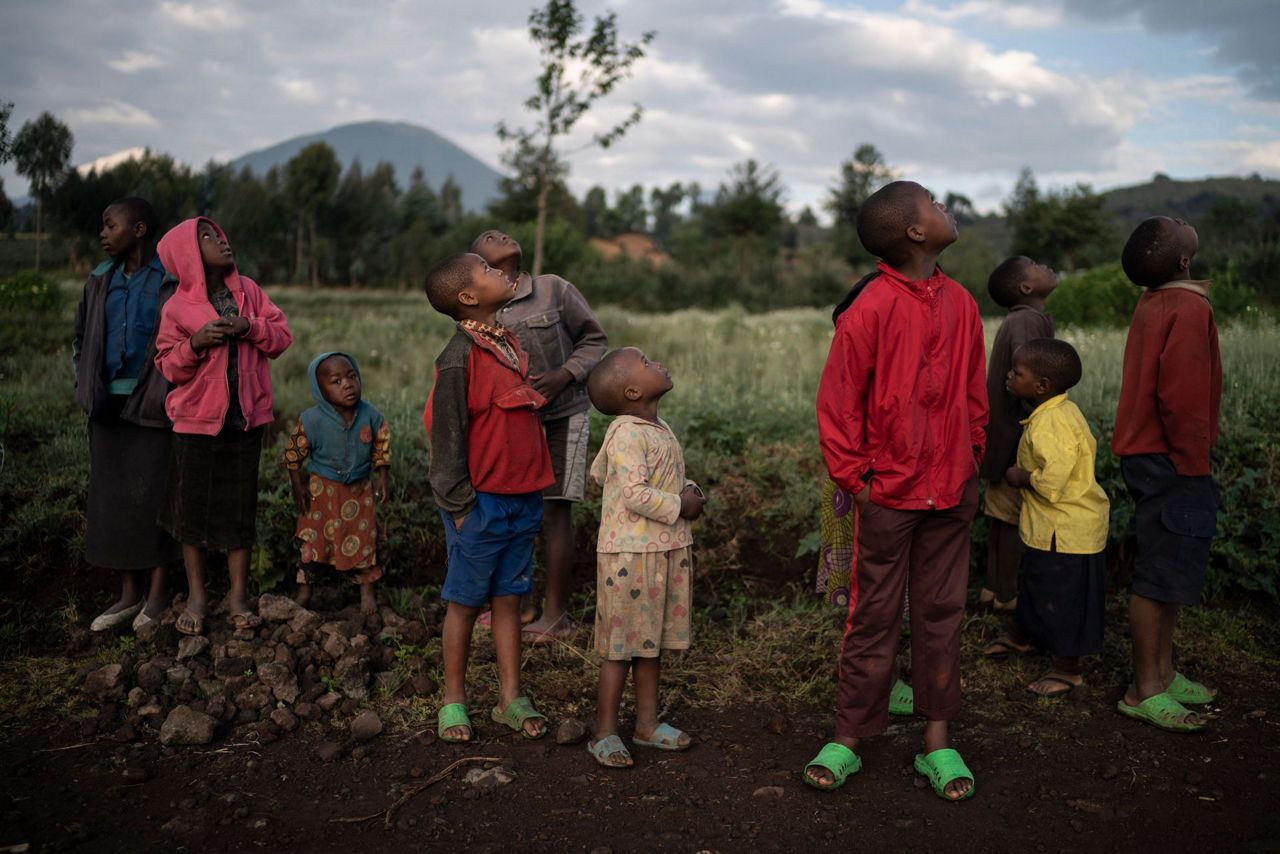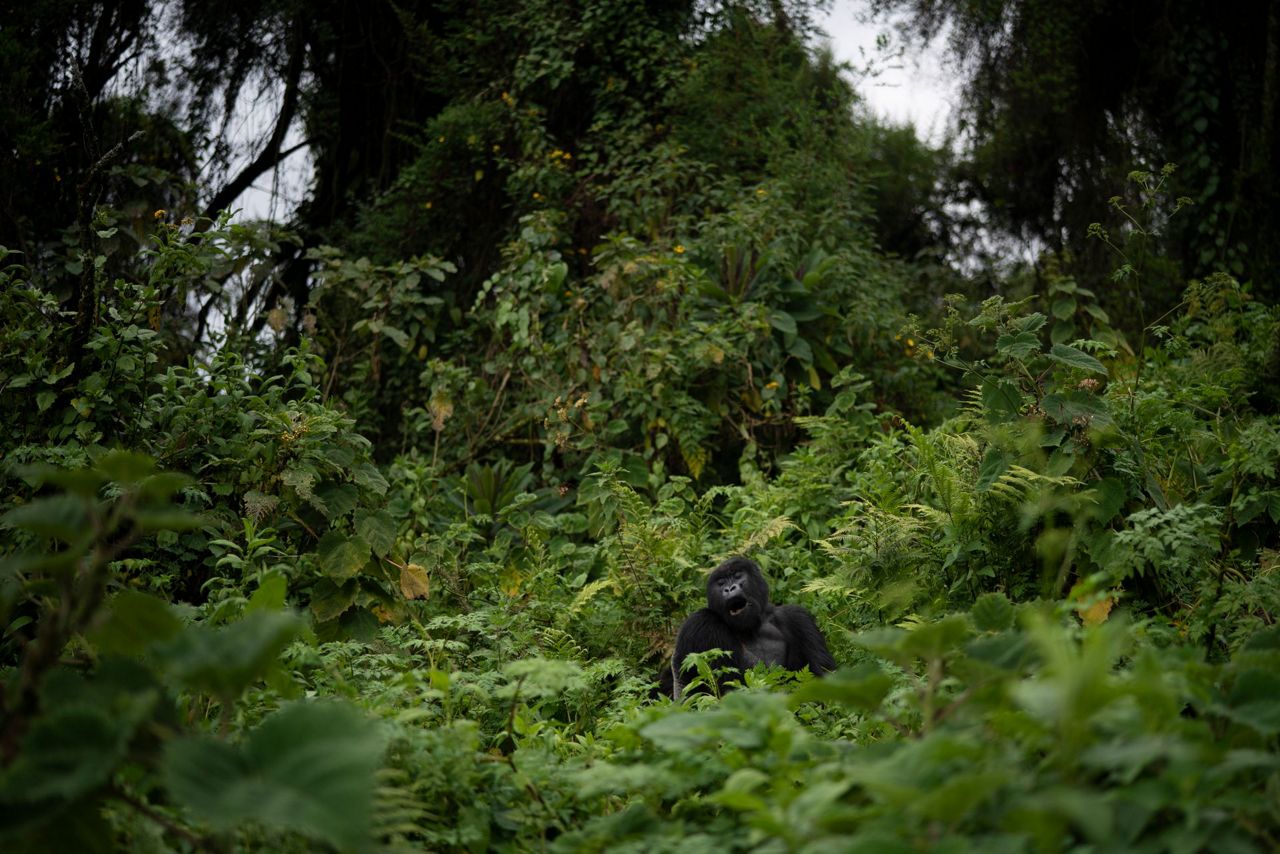KINIGI, Rwanda (AP) — Deep in the rainforest of Volcanoes National Park, a 23-year-old female gorilla named Kurudi feeds on a stand of wild celery. She bends the green stalks and, with long careful fingers, peels off the exterior skin to expose the succulent inside.
Biologist Jean Paul Hirwa notes her meal on his tablet computer as he peers out from behind a nearby stand of stinging nettles.
The large adult male sitting next to her, known as a silverback, looks at him quizzically. Hirwa makes a low hum — "ahh-mmm" — imitating the gorillas' usual sound of reassurance.
"I'm here," Hirwa is trying to say. "It's OK. No reason to worry."
Hirwa and the two great apes are all part of the world's longest-running gorilla study — a project begun in 1967 by famed American primatologist Dian Fossey.
Yet Fossey herself, who died in 1985, would likely be surprised any mountain gorillas are left to study. Alarmed by rising rates of poaching and deforestation in central Africa, she predicted the species could go extinct by 2000.
Instead, a concerted and sustained conservation campaign has averted the worst and given a second chance to these great apes, which share about 98% of human DNA.
Last fall, the Switzerland-based International Union for Conservation of Nature changed the status of mountain gorillas from "critically endangered" to "endangered," an improved if still-fragile designation, reflecting new survey data.
It wouldn't have happened without an intervention some biologists call "extreme conservation," which has entailed monitoring every single gorilla in the rainforest, periodically giving them veterinary care — to clean infected wounds, for instance — and funding forest protection by sending money into communities that might otherwise resent not being able to convert the woods into cropland.
"The gorillas are still here. We celebrate that as a victory," Hirwa says.
Instead of disappearing, the number of mountain gorillas — a subspecies of eastern gorillas — has risen from 680 a decade ago to just over 1,000 today. Their population is split between two regions, including mist-covered defunct volcanoes within Congo, Uganda and Rwanda — one of Africa's smallest and most densely populated countries.
"The population of mountain gorillas is still vulnerable," says George Schaller, a renowned biologist and gorilla expert. "But their numbers are now growing, and that's remarkable."
Once depicted in legends and films like "King Kong" as fearsome beasts, gorillas are actually languid primates that eat only plants and insects, and live in fairly stable, extended family groups. Their strength and chest-thumping displays are generally reserved for contests between male rivals.
Hirwa works for the Dian Fossey Gorilla Fund, a conservation nonprofit group. The organization is a successor to the Digit Fund, which Fossey created in 1978 after poachers killed one of her favorite gorillas, Digit. Today the organization supports research, education and training for future conservationists in Africa.
Every week, Hirwa and other scientists gather data as part of long-term behavioral research.
As Hirwa recently observed a gorilla family, he gingerly pulled back a stalk of stinging nettles for a better view.
He watched as the silverback, a 19-year-old named Pato, walked on all fours toward a squirming infant gorilla, Macibiri. Pato sat beside her and ran his long fingers through her fur, grooming her, looking for insects or other things caught in her glossy black coat. He made a low hum.
"Not every silverback will do that, will pay attention to the infants," Hirwa says. "That shows his personality. Pato is one chill silverback."
Hirwa noticed a fresh wound on Pato's chest, a small red slash.
Most likely, he surmised, Pato had been jousting with the family's second silverback for control of the group.
Later, Hirwa informed the chief park warden and the staff at Gorillas Doctors, a nongovernmental group whose veterinarians work in the forest.
The vets monitor wounds and signs of respiratory infections, but they intervene only sparingly.
When they do — for example, by darting a gorilla with antibiotics — they almost never remove the animals from the mountain, since reuniting gorillas can be difficult. A long absence can change the delicate social dynamic.
"Our hospital is the forest," says Jean Bosco Noheli, a veterinarian at Gorilla Doctors. When his team goes into the field to address a gorilla emergency, they must carry everything they might need in equipment bags weighing up to 100 pounds — including portable X-ray machines.
Schaller, the biologist, conducted the first detailed studies of mountain gorillas in the 1950s and early '60s, in what was then the Belgian Congo. He also was the first to discover that wild gorillas could, over time, become comfortable with periodic human presence, a boon to researchers and, later, tourists.
Today, highly regulated tour groups hike in the Rwandan rainforest to watch gorillas.
Within Volcanoes National Park, tour groups are limited to eight people at a time, with only an hour spent observing gorillas.
You can't carry food or even water bottles near the animals, lest a curious silverback snatch them and perhaps be exposed to your germs. Don't hold eye contact for too long. And if a gorilla acts aggressive — which is rare — look down, bend your knee and show you acknowledge its authority. Hirwa calls this "submissive pose."
The number of tourists per day is limited, and the price is steep: $1,500 per visit.
Ticket revenue pays for operating costs and outstrips what might have been made from converting the rainforest to potato farms and cattle pastures. About 40% of the forest already was cleared for agriculture in the early 1970s.
"With tourism, the tension is always not to overexploit," says Dirck Byler, great ape conservation director at the nonprofit Global Wildlife Conservation, which is not involved in the Rwanda gorilla project. "But in Rwanda, so far they're careful, and it's working."
The idea of using tourism to help fund conservation was contentious when conservationists Bill Weber and Amy Vedder first proposed it while living in Rwanda during the 1970s and '80s. Fossey herself was skeptical, but the pair persisted.
"The wonder of the gorillas' lives, their curiosity, their social interactions — we felt that's something that could be accessible to others, through careful tourism," Vedder says.
Figuring out the balance of how many people could visit the forest, and for how long, was a delicate process of trial and error, Weber says.
The pair, who are married and currently professors at Yale University, had another idea, equally radical when it was first proposed — some of the money raised must benefit local communities.
"Back then, the field of conservation was dominated by the 'fortress model': You draw a line, build a wall, hire guards and keep local people out," Weber says. "But it wasn't really working to stop poaching. There needs to be a real incentive for local people to care about conservation."
In 2005, the government adopted a model to steer 5% of tourism revenue from Volcanoes National Park to build infrastructure in surrounding villages, including schools and health clinics. Two years ago, the share was raised to 10%.
To date, about $2 million has gone into funding village projects, chief park warden Prosper Uwingeli says. "Every year, we meet with the communities," he says. "We have to give back."
Before taking on the job of running what amounts to one of Rwanda's most high-profile enterprises, Uwingeli studied gorilla behavior as a research assistant at the Dian Fossey Gorilla Fund.
Sometimes he misses the quiet, patient work of a scientist. But his time in the field also helped shape his mission.
"We don't want to protect the park with guns. We want to protect and conserve this park with people who understand why, and who take responsibility," he says.
One recent morning at dawn, Emmanuel Bizagwira, one of the park's 100 full-time gorilla trackers, spotted something moving in the trees ahead.
"Can you see over there?" he says, pointing with his radio antenna. "The gorillas are eating there. I saw them. Did you see the trees? They're there."
Pushing through waist-high shrubs alongside fellow tracker Safari Gabriel, he kept his eyes on the trees where he'd seen movement.
Each morning, his job is to locate the whereabouts of a particular 24-member gorilla family, called Agashya group, then alert the park warden.
These gorilla trackers are the backbone of the entire conservation project. Their work enables the scientists, tour guides and veterinarians to find gorillas quickly and do their jobs.
Bizagwira's grandfather also hiked in the same forest. He was a poacher who laid traps for bushmeat, mostly intended for antelopes but sometimes also ensnaring gorillas.
Bizagwira, 31, says he is grateful to have steady work to protect the gorillas.
"I love my job, I love wild animals," he says.
He can identify several dozen plants that gorillas eat, and looks for torn or crushed stems to determine where gorilla troops may have recently passed. Sometimes, he glimpses elephants and golden monkeys in the same forest.
At Nyabitsinde Primary School, nearly every pupil has at least one relative working in nearby Volcanoes National Park. Leontine Muhawenimana, who is 11, says her father also is a tracker, and she likes to hear his stories about gorillas.
The school has new classrooms with blackboards and wooden benches, and a colorful mural outside the bathroom reads "Washing hands prevents diseases." But the school is still short on some basic supplies, like pencils.
"The money that built this school comes from tourism," says Fabien Uwimana, a French and English teacher. "More children today can go to school."
The money from tourism helps, but the region is still poor.
Jean Claude Masengesho lives with his parents and helps them farm potatoes. About once a week, the 21-year-old earns a little extra money helping tourists carry their bags up the mountain, totaling about $45 a month. He would like to someday become a tour guide, which would earn him about $320 monthly.
The obstacle is that most tour guides have attended college, and Masengesho isn't sure how his family can afford tuition.
"It's my dream, but it's very hard," he says. "In this village, every young person's dream is to work in the park."
In the meantime, he draws portraits of gorillas with green and black crayons. Mostly, he draws silverbacks.
He is fascinated by gorillas, but also pragmatic. "People come from all over the world to see the gorillas," he says. "Gorillas bring us money from all over the world, and we need to protect them."
Sixty years after he first moved to central Africa to study gorillas as a wide-eyed 26-year-old with a notebook, the veteran biologist Schaller says conservation may need both a moral and an economic argument.
Schaller believes that people have no right to exterminate a species, but also that "you have to find some economic benefit for the people that border the park."
"You have to involve them somehow," he says, "make them feel it's their park, too."
___
This Associated Press series was produced in partnership with the Howard Hughes Medical Institute's Department of Science Education. The AP is solely responsible for all content.
Copyright 2019 The Associated Press. All rights reserved. This material may not be published, broadcast, rewritten or redistributed.



